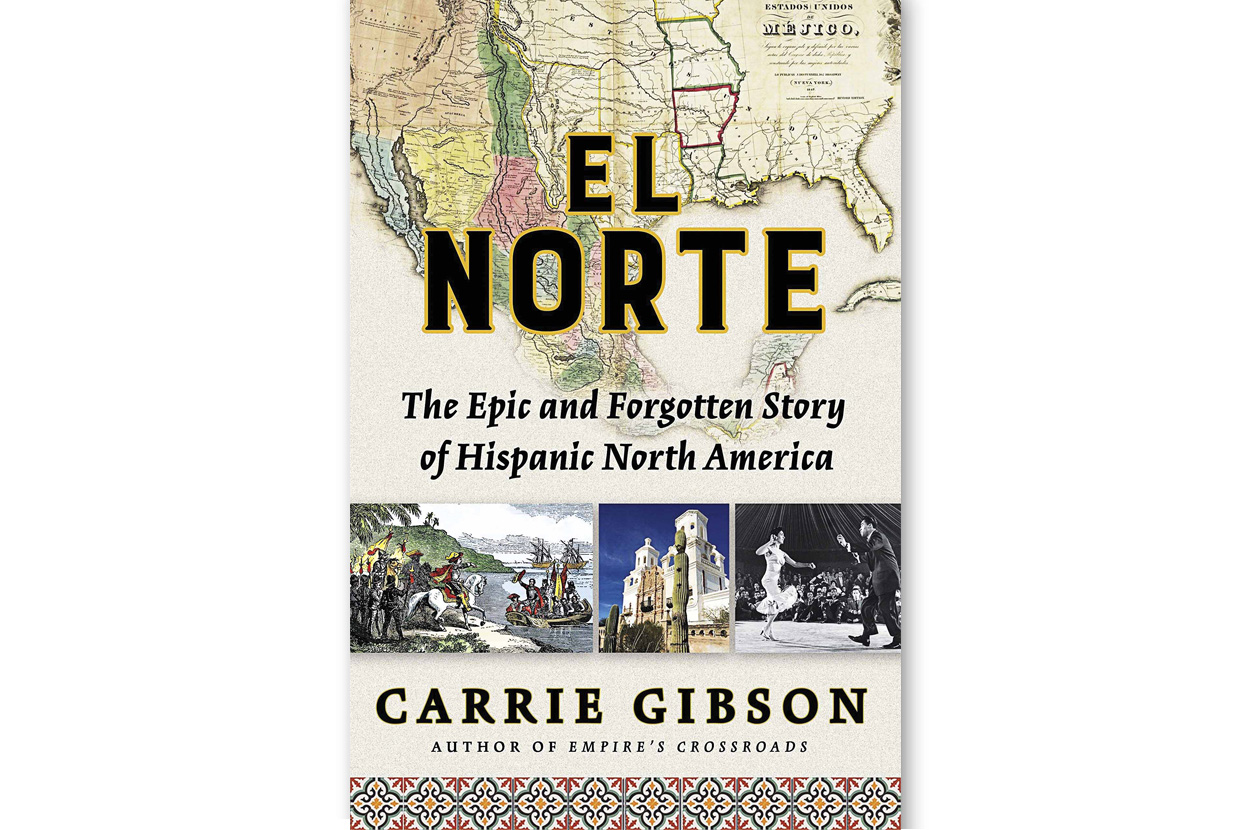This article is adapted from AQ’s special report on migration
In 1932, California conservationist Christine Sterling commissioned Mexican artist David Alfaro Siqueiros to paint a mural in Los Angeles’ El Pueblo neighborhood — an urban revival project-cum-tourist attraction in the middle of downtown.
Sterling expected a romantic vision of Mexico’s past, but when the mural was unveiled to a sizeable crowd in October 1932, it was clear that the communist-leaning Siqueiros had different priorities. Covering an 18-by-80-foot wall, “América Tropical” depicted a crucified indigenous man surrounded by Mayan motifs and armed revolutionaries. The work elicited a startled response from the audience; Sterling labeled it anti-American. “América Tropical” was hastily painted over, and only recently unveiled again after intensive restoration efforts.
As we learn in historian and journalist Carrie Gibson’s El Norte: The Epic and Forgotten Story of Hispanic North America, the mural saga speaks to larger themes in North America’s Hispanic history. From the outset, North America was an imagined land where early explorers searched for mythical cities filled with treasure. As Gibson points out, this myth never died — it only evolved. This can be seen in the revelry of Cinco de Mayo and Columbus Day, depictions of Hispanic culture in the media, and modern political discourse surrounding Mexico, all of which paint an uneven, misleading account of Hispanic contributions to North America’s past and present. Through her impressive research and enthralling prose, Gibson combats this simplification and presents a rich history that is too often left untold.
El Norte first explores the colonization of North (and South) America by the conquistadors and the empires they represented. Gibson details the diverse interests that descended on the New World, while incorporating history from the native point of view as well. Of course, some of the names — Cortés, Ponce de León and even Bartolomé de las Casas — will strike most readers as at least vaguely familiar. But Gibson also relishes attention on the more obscure figures like Álvar Núñez Cabeza de Vaca, whose epic eight-year journey began in 1528 and took him from Florida to the Gulf of California.
To fully understand the proliferation and subsequent decline of Spanish influence in North America, Gibson deftly incorporates Portuguese, English, French, and Russian colonial efforts to illustrate the fierce competition on the continent. This is a long, chaotic history that could easily consume one or more volumes on its own. Recognizing this, El Norte does not seek to be exhaustive, but instead tethers its chapters to specific locations in order to narrate every epoch from Columbus’ landing to modern-day border disputes. For instance, in “Nootka Sound, Canada, ca. 1760s-1789,” Gibson details Spanish efforts to curtail British and Russian incursions on Canadian territory while also focusing on increased interest in the West Coast more broadly. Another especially scrumptious chapter, “New Orleans, Louisiana, ca. 1790-1804,” showcases how the French Revolution, slavery and the 1803 Louisiana Purchase harmed Spanish interests in the vast, largely unknown region. Through this clever structure, the reader gets a sense of broad historical developments by observing their effects in a concentrated area.
Before reaching the second half of the book, European powers recede into the background as the United States becomes “a more confident and stable nation.” This confidence increasingly brings the United States into conflict with its neighbor to the south. For the period from 1820 to 1877, Gibson focuses on Texas and New Mexico to explore the gradual erosion of Mexican control. At the time, incorporating these new lands into the United States raised heated debate about which groups were deserving of citizenship and which were not. This often raised complex questions about race that a binary system of racial classification was ill-equipped to handle. Ambiguity surrounding “whiteness” led Tejano Mexicans in the 1850s to assert Spanish origins in order to be classified as white. Indeed, Gibson’s book continually demonstrates that throughout North American history, “belonging” often had ethnic, geographical and racial requirements.
Gibson continues to pursue these questions of race and acceptance across various locales in the early to mid-20th century. Returning from the battlefields of World War II, Mexican-Americans put a pause on enjoying post-war life to take up the fight against so-called Jaime Crow, informal rules meant to deny Mexicans and Mexican-Americans an equal place in society. Later, El Norte turns its attention to post-revolutionary Cuba, where a wave of immigrants fleeing Fidel Castro’s regime turned Miami into a “sort of border town,” as the “nonstop flotilla” across the Florida Straits brought a constant stream of new arrivals. Then, appropriately, the book pivots to recent U.S.-Mexico border issues such as undocumented immigration from Mexico and the Northern Triangle of Central America , serving as a powerful reminder that the issues of ownership and exclusion that pervade North America’s Hispanic history are as alive today as ever.
The scope of El Norte carries with it some risks. This is an ambitious book that covers a tremendous amount of material. But in no place does it feel disorienting. Ultimately, Gibson delivers a book of both impressive breadth and meticulously researched detail — adding necessary and enlightening context to an under-appreciated slice of North American history.
—
Crandall teaches politics at Davidson College and is the author of The Salvador Option: The United States in El Salvador (Cambridge University Press, 2016); Richardson is a 2019 graduate of Bowdoin College








